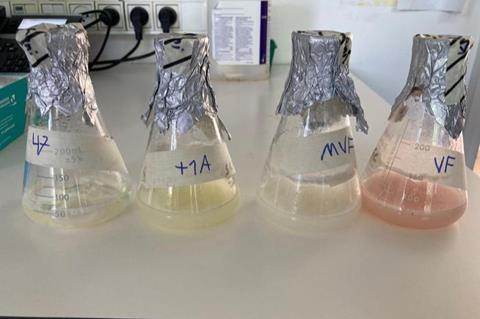A study led by PhD student Shani Friedman (Goldfarb), under the supervision of Prof. Menachem Moshelion from the Institute of Plant Sciences and Genetics in Agriculture at the Hebrew University of Jerusalem, has demonstrated a new approach to detect Fusarium wilt in tomatoes at its earliest stages, long before symptoms become visible. This research offers significant implications for plant science, providing breeders and scientists a robust method to improve early disease detection and deepen understanding of plant-pathogen interactions.

Fusarium wilt, caused by the soil-borne fungus Fusarium oxysporum f. sp. lycopersici, is a devastating disease that results in substantial economic losses worldwide. Traditionally, the detection of plant diseases such as Fusarium wilt relies on visual assessments, which can often be subjective and inaccurate. By the time symptoms are visible, substantial damage has usually already occurred.
However, this study, published in the journal Plant Disease, takes a different approach, focusing on precise water-relation measurements using a high-throughput physiological phenotyping system. The research team employed advanced lysimeter technology to continuously monitor transpiration rates and biomass changes of tomato plants in a semi-controlled greenhouse environment. Remarkably, they observed a decrease in the plants’ transpiration rates days to weeks before any visual symptoms appeared.
READ MORE: New study reveals high levels of fusarium mycotoxins in seized cannabis from Arizona and California
READ MORE: Scientists unveil crucial virulent milRNAs implicated in initial infection of Fusarium wilt
“This research demonstrates that water-related physiological traits like transpiration can act as sensitive, reliable early indicators of Fusarium infection,” explained Shani Friedman. “We were able to quantitatively measure how plants respond to the pathogen well before they exhibited the traditional visible symptoms of disease.”
Plant-pathogen interactions
The study’s quantitative method not only detects disease early but also measures pathogen virulence and plant susceptibility. This gives researchers and farmers clear, numeric data to determine how aggressively a pathogen is affecting crops, and to assess how different tomato varieties resist or tolerate Fusarium wilt.
Dr. Shay Covo, a key collaborator from the Department of Plant Pathology and Microbiology, emphasized the broader relevance of the findings:
“This quantitative approach opens new directions for studying plant–pathogen interactions. It enables us to understand better how pathogens influence plants at the early stages of the disease” Prof. Menachem Moshelion highlighted the potential of the methodology beyond tomato plants: “Our approach opens exciting possibilities not just for tomato plants, but for agricultural practices in general. Early detection through physiological monitoring can significantly reduce crop losses and enhance sustainable agricultural management.”
This innovative methodology has potential beyond tomatoes. The research team also successfully applied it to potato plants infected with late blight, demonstrating the versatility of their physiological monitoring system for other important plant diseases.
Topics
- Agriculture
- Environmental Microbiology
- Food Science & Technology
- Food Security
- Fungi
- Fusarium oxysporum f. sp. lycopersici
- Fusarium wilt
- Healthy Land
- Institute of Plant Sciences and Genetics in Agriculture
- Menachem Moshelion
- Microbiological Methods
- Middle East & Africa
- Research News
- Shani Friedman
- Shay Covo
- Soil & Plant Science
- The Hebrew University of Jerusalem







No comments yet